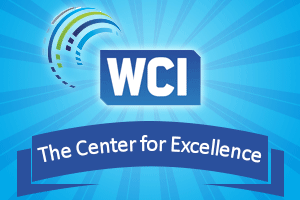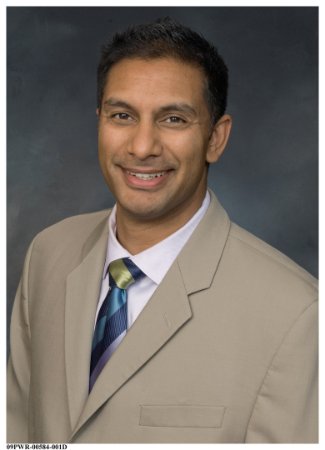
I am very excited about our Center for Excellence session, “Evolving Healthcare Models and Workers’ Compensation Opportunities" on August 26th at the Workers’ Compensation and Education Conference. We have a great panel that will share how digital health and evolving healthcare delivery models have the potential to significantly enhance workers’ compensation access to care, address quality care opportunities and reduce health and productivity costs.
I encourage you to read the guest blog below by Dr. Sri Mummaneni, M.D., M.P.H., FACOEM, Chief Health Officer for OPUS Telehealth, and watch my interview with Dr. Mummaneni on this topic.
Most importantly I encourage you to attend WCEC 2015 and the entire Center for Excellence sessions. If you have questions you can reach me on Twitter @kimberlyanngeo. See you next week.
Kimberly George, SVP, Corporate Development, M&A, and Healthcare Sedgwick
One of the reasons I became a physician is because I was able to understand complex scientific issues and teach them to others. As a doctor, I relay complex medical issues to patients so they may have the tools to take better care of themselves. Unfortunately, in our current system, there is a disconnect between the healthcare delivered and the health care received. Patients are disconnected from doctors, and the medical community is disenfranchised from patients due to faults in the system. This fragmented environment altered the course of my career from a physician connecting with individual patients to a physician who finds ways to help doctors and patients reconnect. Digital technology allows me to make that farther reaching connection.
On behalf of OPUS Telehealth, I am looking forward to participating in “The Center for Excellence – The Study of Medical Cost Drivers in Workers’ Compensation.” Sponsored by Sedgwick at the 2015 Workers’ Compensation and Education Conference next week in Orlando, Florida.
Today, patients are looking to become more in charge of their own healthcare. It should come as no surprise that a high degree of patient engagement improves patient outcomes while simultaneously enhancing patient satisfaction and reducing the overall cost of care to payors. Today, technology drives this patient engagement. Traditionally, doctors only have patients’ attention for a few minutes during office visits, and usually while the patient is sick or injured. With the growth of digital health, doctors and patients interact more frequently and efficiently, with technology acting as the vital conduit between patients and their support systems.
A new era has arrived
Telemedicine provides a conduit for all healthcare providers and patients to engage via remote face-to-face visits. In a workers’ compensation case, a patient may have as many as 2 to 4 times the number of doctor visits as a patient being treated for the same condition in group health.
Reasons for these increased visits notwithstanding, the multiple follow-up visits can now be done remotely through a patient’s mobile phone or tablet. This dramatically cuts down on patients’ travel time, and decreases the workload for the physician’s office staff. In addition, having better access to a physician may reduce the number of excess follow-up visits and provide those visits at a lower cost. Remote visits also have the added benefit of lower missed appointments rates because the device is always with the patient.
Remote patient monitoring (RPM) allows physicians to monitor patients’ vitals including blood pressure, blood sugar, pain levels, weight and more. Doctors and nurses monitor these metrics along with patients’ answers to health surveys, using both automated and manual processes, and the way patients respond to their technology determines what education patients receive.
For example in a workers' compensation case, a nurse may see a negative trend in the patient’s pain, activities of daily living or work performance, and suggest exercises or other therapy to bring the injured worker back on the path to recovery.
How valuable is this regular monitoring? A study in JMCM demonstrated that RPM decreased a diabetic’s HgA1C, a measure of blood sugar over time, by 1.8%. In comparison, a good medication for diabetes will reduce HgA1C by 1%. When healthcare provides better results than medication at a fraction of the cost, providing that care is a no-brainer.
Four areas of caution:
1. The technology needs to fit into clinical models and workflow, or it risks pushback from treating physicians.
2. Telemedicine and RPM also have to fit into the daily routines of patients and their families.
3. The technology provides a tsunami of raw data that must be properly interpreted. Physicians and technology platform providers need to collaborate and ensure the best hardware is deployed (because hardware is designed to collect specific types of data), while simultaneously being mindful of the software used to filter that data, converting it into actionable information that can drive on-the-fly decisions.
4. Arguably, the most important area is that this vast repository of personalized data needs to be secured. Not just password protected (which generally constitutes HIPAA compliance), but truly secure. Imagine locking a precious item inside a safe and sending the safe, with the key attached to it, via messenger to your doctor. Anyone that sees the safe while it’s in transit can use the key to open the safe. That’s basically what we do every time we send an “encrypted” message over the internet.
At OPUS Telehealth, we take the security of patient data very seriously. HIPAA compliance isn’t enough when we’re talking about handling the most precious information anyone has. That’s why OPUS Telehealth set up its own proprietary wireless network to secure the entire pipeline of data from a patient to a physician. This is the only way to truly ensure patient information isn’t compromised.
I look forward to discussing this exciting topic next week. Please be sure and attend the Center for Excellence sessions.
Dr. Sri Mummaneni, M.D., M.P.H., FACOEM Chief Health Officer for OPUS Telehealth
